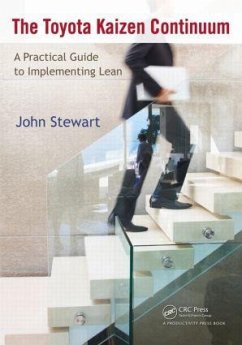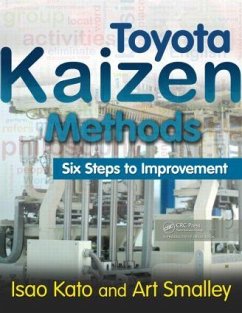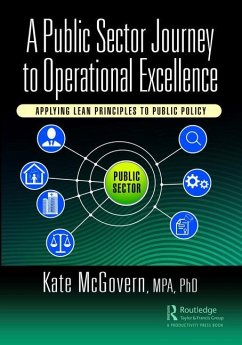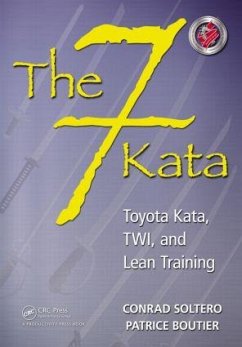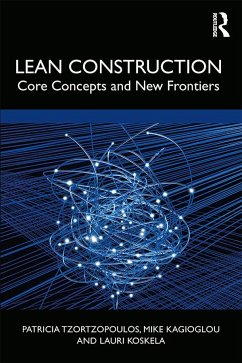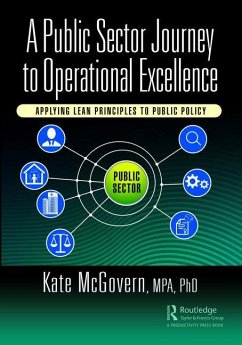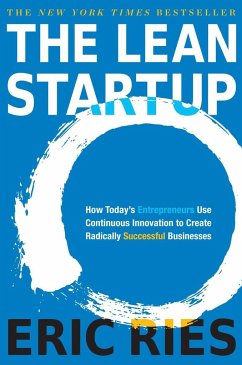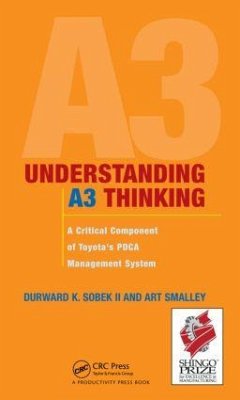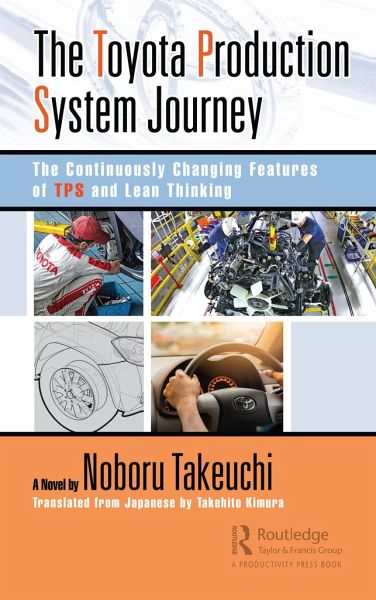
The Toyota Production System Journey
The Continuously Changing Features of TPS and Lean Thinking
Versandkostenfrei!
Versandfertig in 6-10 Tagen
36,99 €
inkl. MwSt.
Weitere Ausgaben:

PAYBACK Punkte
18 °P sammeln!
The Toyota Production System (TPS) is regarded as a sophisticated concept that helps us understand the world of manufacturing. It evolved from the system of mass-producing cars, established by Ford, and the Japanese have since endeavored to make their own universal production system. Though much has been accomplished, TPS' progress is a continuous process. The theme of this book is how to understand and learn TPS.There is a TPS concept that seems to elude many, and that is that manufacturers should be able to make a product available at the moment a customer comes and asks for it. There are va...
The Toyota Production System (TPS) is regarded as a sophisticated concept that helps us understand the world of manufacturing. It evolved from the system of mass-producing cars, established by Ford, and the Japanese have since endeavored to make their own universal production system. Though much has been accomplished, TPS' progress is a continuous process. The theme of this book is how to understand and learn TPS.
There is a TPS concept that seems to elude many, and that is that manufacturers should be able to make a product available at the moment a customer comes and asks for it. There are various ways and various tools that can be used to pursue the ideal state, and therefore we need to focus on the basic principles of TPS. This book tries to explain those Toyota Production System concepts that may otherwise be elusive.
This book focuses on the factory to help readers understand the fundamental ideology of TPS. The main character started his career as a technical expert in the R&D division of an automotive Company and eventually becomes an Instructor of TPS. His broad career in companies is used to vividly describe the form of the Toyota Production System. To explain the growth of apprentices of various titles and positions, this story is woven with several short stories presented from the perspective of the main character, who grows from being a group leader to section leader to manager to general manager.
Essentially, this book describes the Toyota Production System as based on the philosophy: "Always sketching out and pursuing the ideal state of manufacturing."
There is a TPS concept that seems to elude many, and that is that manufacturers should be able to make a product available at the moment a customer comes and asks for it. There are various ways and various tools that can be used to pursue the ideal state, and therefore we need to focus on the basic principles of TPS. This book tries to explain those Toyota Production System concepts that may otherwise be elusive.
This book focuses on the factory to help readers understand the fundamental ideology of TPS. The main character started his career as a technical expert in the R&D division of an automotive Company and eventually becomes an Instructor of TPS. His broad career in companies is used to vividly describe the form of the Toyota Production System. To explain the growth of apprentices of various titles and positions, this story is woven with several short stories presented from the perspective of the main character, who grows from being a group leader to section leader to manager to general manager.
Essentially, this book describes the Toyota Production System as based on the philosophy: "Always sketching out and pursuing the ideal state of manufacturing."




